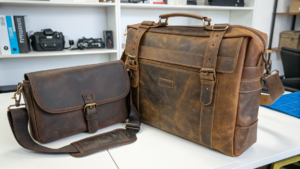How to Buy a Good Water Bottle?
Are you looking for a new water bottle? It seems simple, but finding the right one can be tricky. It is about more than just being leakproof.
To buy a good water bottle, you should consider your daily use case, the material (like stainless steel, glass, or BPA-free plastic) based on your priorities for insulation, taste, and durability, and ultimately choose one that seamlessly fits into your habits to encourage consistent hydration.
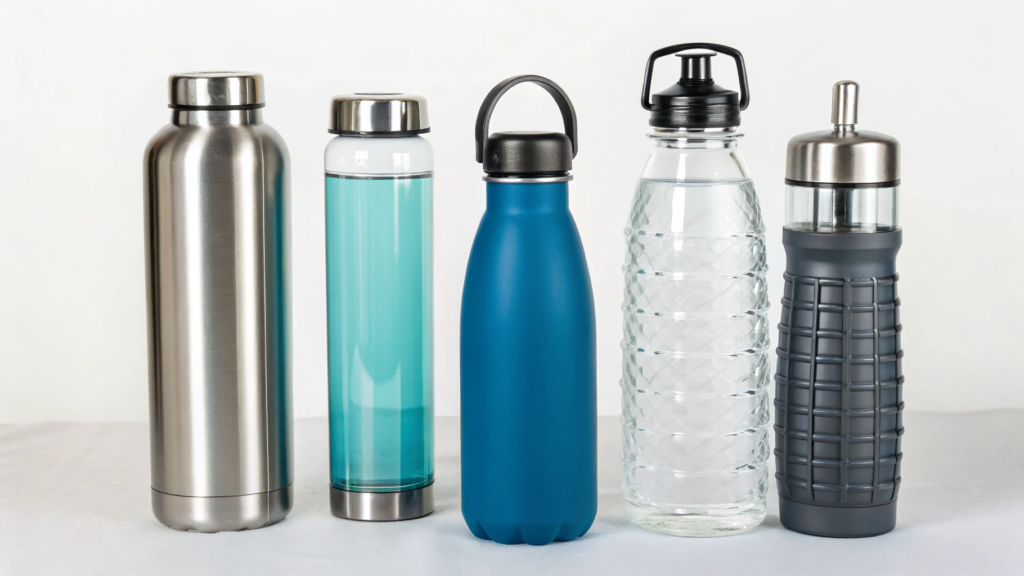
Most people think buying a water bottle is a simple checklist: leakproof, BPA-free, maybe insulated. But the truth is, choosing a good water bottle means asking how it fits into your daily rhythm and your values. The best water bottle is not just functional. It is a tool that supports how you move through the world.
What Should You Look For When Buying a Water Bottle?
Are you unsure what features matter most in a water bottle? There are many options. Knowing what to look for helps you pick the right one.
When buying a water bottle, you should look for features that match your specific needs, including the material for desired properties (insulation, taste), capacity for hydration goals, lid type for ease of use, and overall design that encourages consistent daily use and fits your lifestyle.
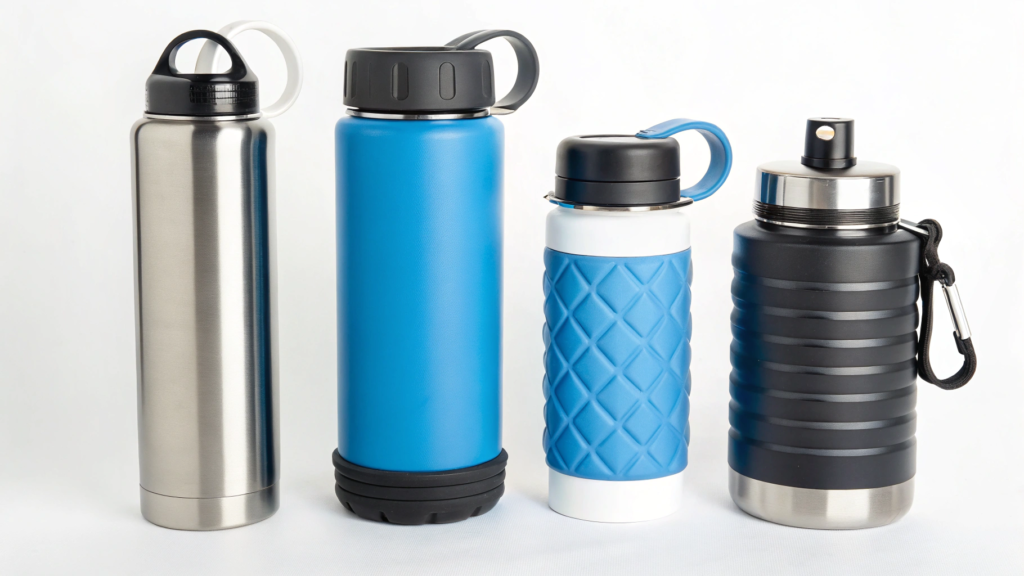
I have learned that the most overlooked factor in choosing a good water bottle1 is how you plan to use it. Are you buying for the gym, the office, hiking, or all-day desk hydration? A bottle perfect for commuting, like one that is lightweight and opens with one hand, might be a burden on a long hike. For hiking, durability and high capacity matter more. Instead of chasing the "best" bottle, focus on the best bottle for you. That is how form truly follows function.
Key Factors to Consider for Your Ideal Bottle
Choosing the right water bottle involves evaluating several key factors to ensure it meets your specific needs and preferences for daily hydration.
| Factor | Description | Why It Matters | Example Consideration |
|---|---|---|---|
| Material | Stainless steel, glass, BPA-free plastic, silicone. | Affects insulation, taste, durability, weight, and sustainability. | Stainless steel for hot/cold, glass for pure taste. |
| Capacity | How much water it holds (e.g., 500ml, 1 liter). | Matches your hydration goals and need for refills throughout the day. | Larger for long hikes, smaller for office desk. |
| Lid Type | Screw top, flip-top, straw, chug cap, spout. | Influences ease of drinking, leak-proofness, and cleaning. | Straw for easy sipping, screw top for maximum seal. |
| Insulation | Double-walled vacuum insulation. | Keeps drinks hot or cold for extended periods. | Essential for hot coffee or ice-cold water all day. |
| Portability/Size | Fits in cup holders, backpack pockets, or bags. | Ensures you can easily carry it wherever you go. | Slim design for car, loop handle for backpack. |
| Durability | How well it withstands drops, scratches, daily wear. | Impacts the bottle's lifespan and long-term value. | Stainless steel is very durable, glass is fragile. |
| Ease of Cleaning | Wide mouth, dishwasher safe, removable parts. | Prevents bacterial growth and ensures hygiene. | Wide mouth for bottle brush access. |
| Ergonomics/Grip | How it feels in your hand, if it's easy to hold. | Encourages consistent use if comfortable. | Textured surface or contoured shape for grip. |
Materials tell a bigger story. Stainless steel is great for temperature. Glass is pure and taste-neutral. Plastic is lightweight but can wear down. Beyond features, materials speak to your values. Do you prioritize longevity and sustainability? Then stainless steel or glass wins. Do you need something ultralight for travel or kids? BPA-free plastic might make more sense. A good water bottle aligns with both lifestyle and philosophy. It is a small but powerful reflection of how you consume.
What is the Healthiest Brand of Bottled Water?
Are you wondering about the healthiest bottled water2 brands? This question often comes up when people think about hydration. But it is important to know that this question is often misdirected.
The concept of a "healthiest brand of bottled water" is complex and often debated, as most tap water in developed countries is safe and healthy. The "healthiest" choice often depends on individual needs, mineral content, and absence of contaminants, but avoiding single-use plastics and opting for filtered tap water in reusable bottles is often the most health-conscious and sustainable approach.
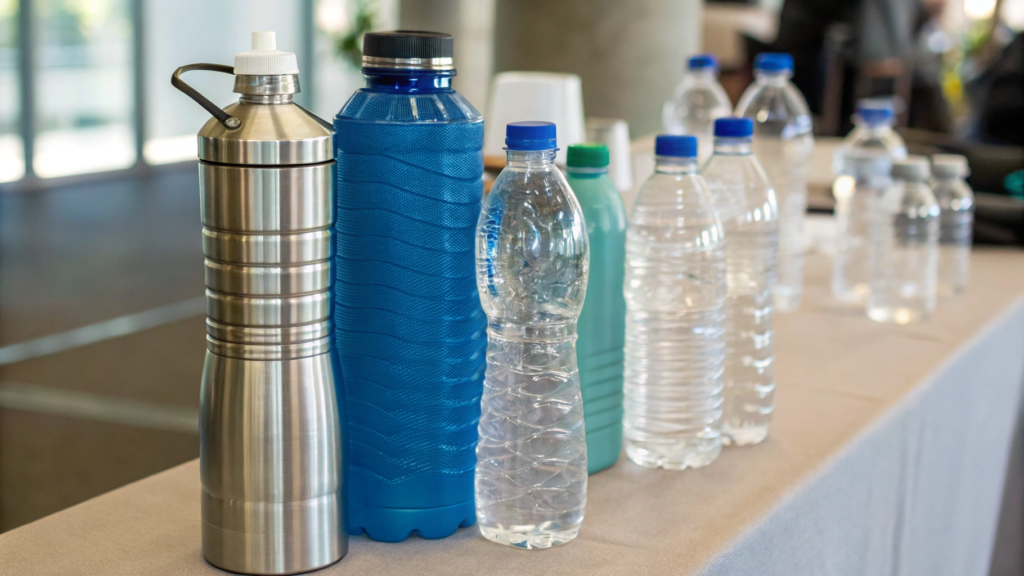
When it comes to bottled water, I have seen many claims. But the real insight is that you are not just buying a bottle. You are building a habit. If your goal is truly health, focusing on the water source matters more than the brand. Many health experts point out that the best water is often filtered tap water. This is because it reduces plastic waste.
The Nuances of "Healthy" Bottled Water
Defining the "healthiest" bottled water involves looking beyond marketing claims to understand water sources, purification methods, and environmental impact, rather than just brand names.
| Aspect | Consideration for "Healthiest" | Why It Matters | Recommendation |
|---|---|---|---|
| Source Water | Spring water, purified water, municipal water. | Affects natural mineral content and potential contaminants. | Spring water (natural minerals) or highly filtered purified water. |
| Purification Method | Reverse osmosis, distillation, UV treatment, carbon filtration. | Removes impurities and contaminants; can also remove beneficial minerals. | Look for methods that balance purity with mineral retention. |
| Mineral Content | Presence of electrolytes and trace minerals (e.g., calcium, magnesium). | Contributes to hydration and body functions; varies widely by brand. | Check labels for mineral profiles; some prefer mineral-rich water. |
| pH Level | Acidity or alkalinity of the water (7 is neutral). | Some prefer alkaline water for potential health benefits, though scientific evidence is mixed. | Choose based on personal preference, not strict health claims. |
| Container Material | Plastic (PET), glass, aluminum. | Plastic can leach chemicals (BPA, phthalates), especially with heat. | Opt for glass or stainless steel reusable bottles for health and environment. |
| Environmental Impact | Single-use bottles contribute to plastic pollution. | Directly affects the planet's health and indirectly human health. | Best option is filtered tap water in a reusable bottle. |
| Cost | Bottled water is significantly more expensive than tap water. | Affects accessibility and long-term sustainability for consumers. | Consider long-term cost savings of reusable bottles and filters. |
At its core, a good water bottle helps you stay hydrated without friction. This means you like how it feels. You remember to bring it. You reach for it naturally. The best water bottle is the one you actually use. This also applies to the water itself. The healthiest water is the one you will consistently drink from a safe, sustainable source.
How Often Should I Replace Water Bottles?
Are you holding onto your water bottle for too long? It is easy to forget about replacing them. But knowing when to replace them is important for hygiene and safety.
The frequency for replacing water bottles depends heavily on the material and how well it is maintained. Plastic bottles, especially single-use types, should be replaced more often due to degradation and potential chemical leaching. Durable materials like stainless steel or glass bottles, when cleaned properly, can last for many years.
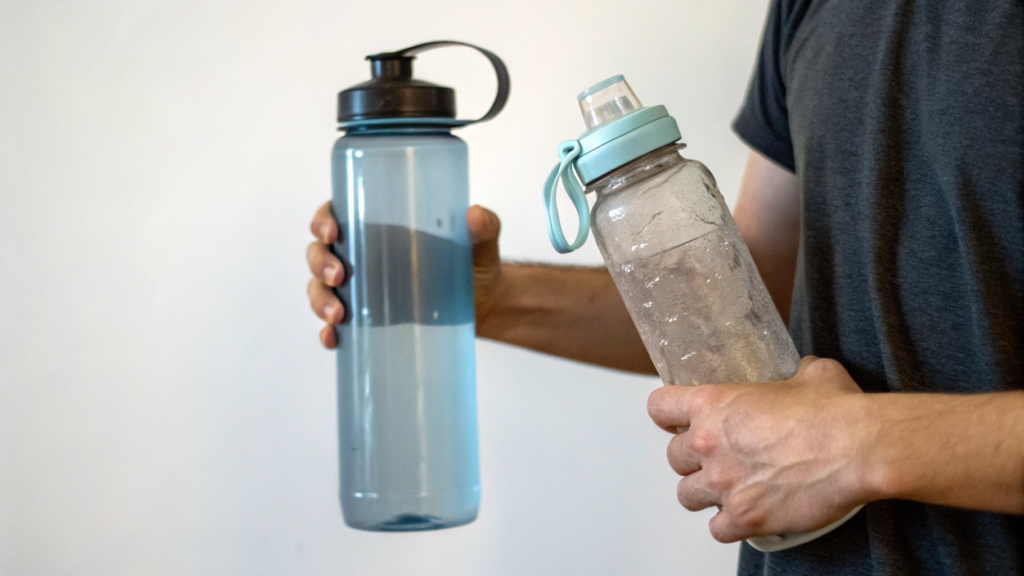
I have always believed in investing in fewer, better things. This applies to water bottles, too. For example, plastic bottles can get scratched easily. These scratches can trap bacteria. This makes them hard to clean well.
Replacement Guidelines by Material Type
Different water bottle materials have varying lifespans and hygiene considerations, influencing how often they should be replaced to ensure safety and performance.
| Material Type | General Replacement Guideline | Reasons for Replacement | Tips for Extending Lifespan |
|---|---|---|---|
| Single-Use Plastic | After 1-2 uses. | Degradation, chemical leaching, bacterial accumulation in scratches. | Avoid refilling; designed for one-time use. |
| Reusable Plastic | Every 6 months to 2 years, or if scratched/cloudy. | Wear and tear, scratches, odor retention, potential chemical breakdown. | Hand wash regularly, avoid extreme temperatures, use a bottle brush. |
| Glass | When chipped, cracked, or broken. | Breakage is the primary concern; material does not degrade. | Use protective silicone sleeves, handle with care. |
| Stainless Steel | When there is rust, persistent odor/taste, or significant dents. | Highly durable; rarely needs replacement if well-maintained. | Regular thorough cleaning, air dry completely, avoid harsh chemicals. |
| Silicone (collapsible) | When showing signs of wear, tearing, or persistent odors. | Can absorb odors over time, susceptible to tears. | Wash regularly, ensure proper drying, store openly. |
| Lids/Straws | More frequently than the bottle body, if worn or discolored. | High contact points, prone to mold/bacterial growth. | Disassemble and clean all parts thoroughly; replace if wear is evident. |
Buying a water bottle should not be a throwaway decision. It is a daily object with long-term impact on your health, your habits, and the planet. Choose the one that fits your life. You will never leave it behind.
Conclusion
Choose a good water bottle by matching material to your needs (insulation, taste, durability) and ensuring it supports your daily hydration habits for long-term use and health.




